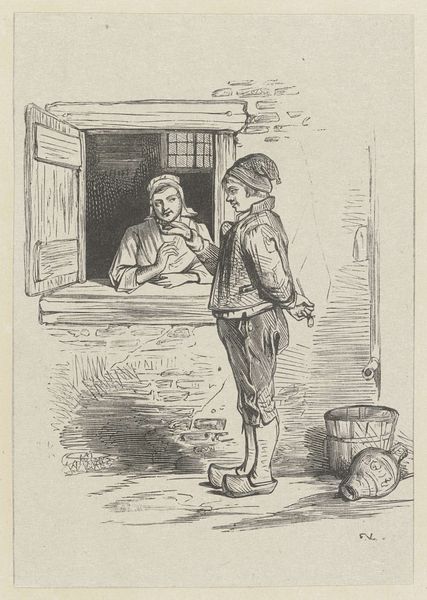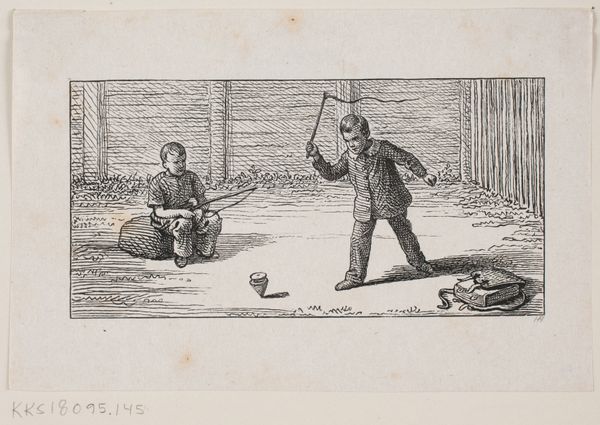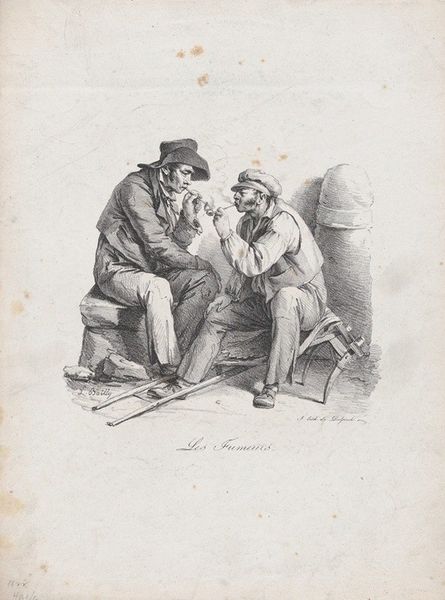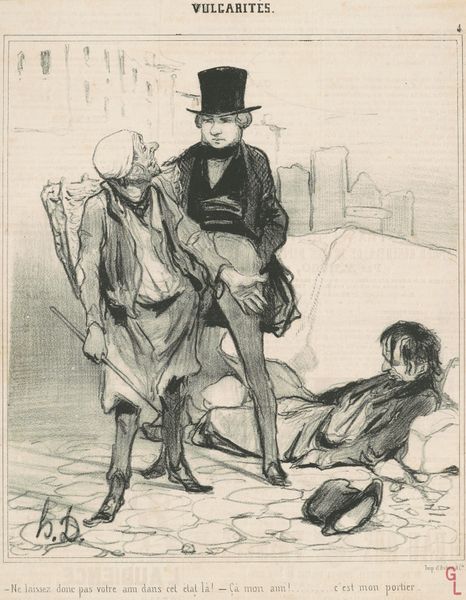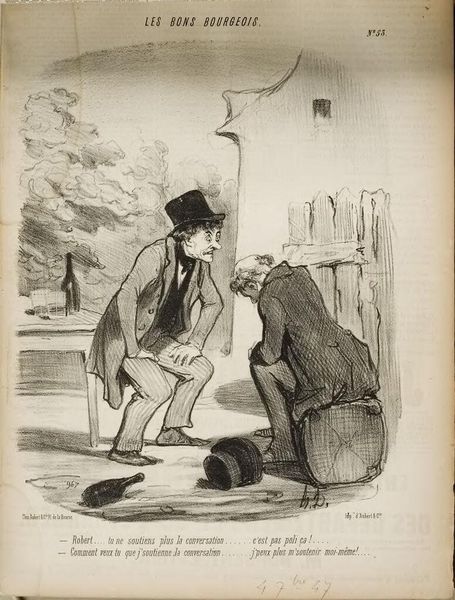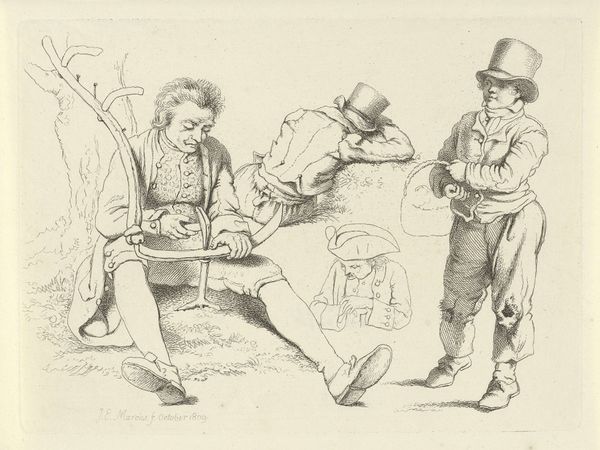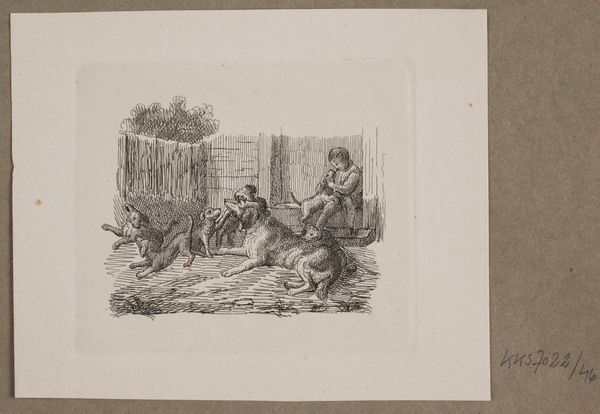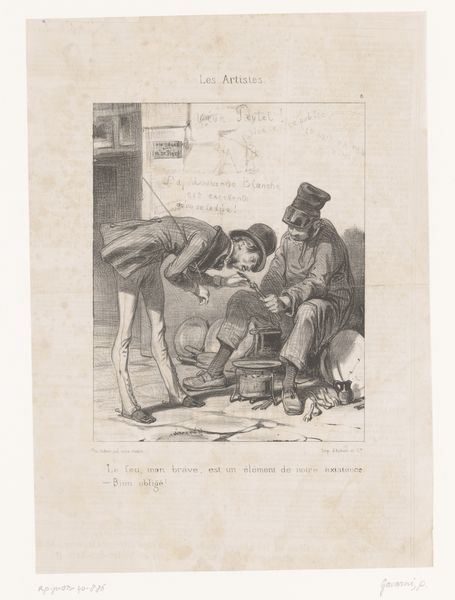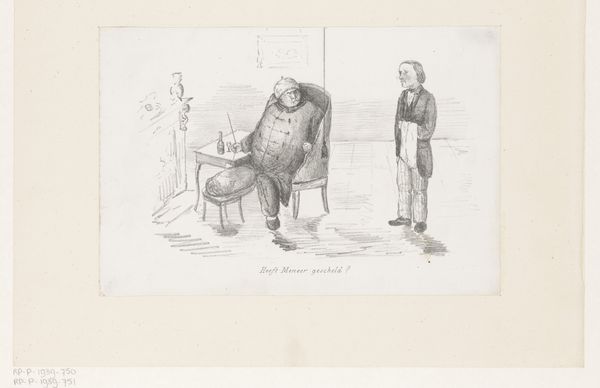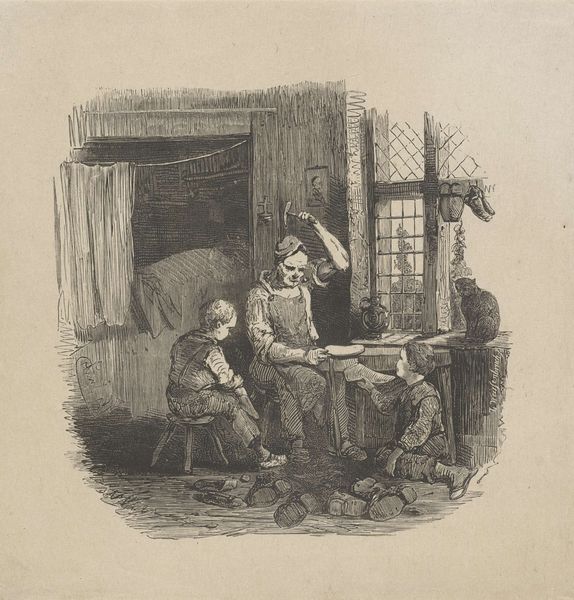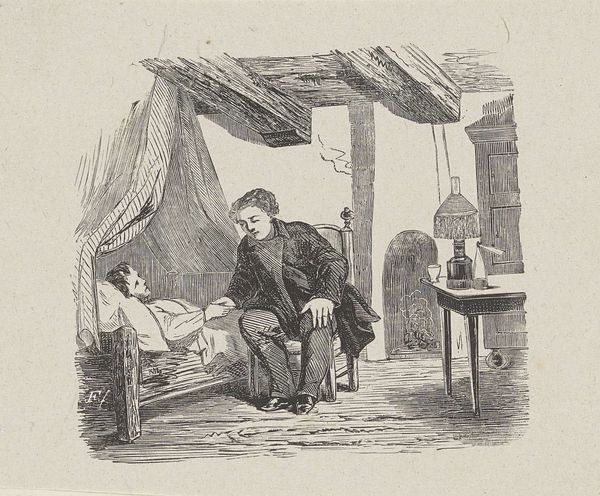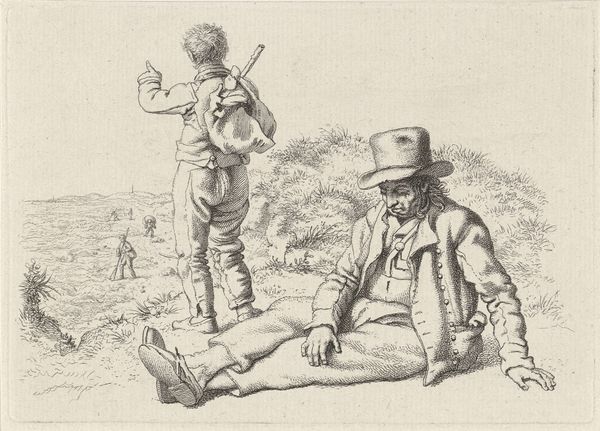
Man schrikt van een hond met kleding aan die naast zijn bed staat 1836 - 1912
0:00
0:00
drawing, pen
#
drawing
#
comic strip sketch
#
imaginative character sketch
#
quirky sketch
#
narrative-art
#
dog
#
figuration
#
personal sketchbook
#
idea generation sketch
#
sketchwork
#
pen-ink sketch
#
comic
#
sketchbook drawing
#
pen
#
genre-painting
#
storyboard and sketchbook work
#
sketchbook art
Dimensions: height 97 mm, width 100 mm
Copyright: Rijks Museum: Open Domain
Curator: Good morning. I am excited to delve into this peculiar piece from the Rijksmuseum’s collection. It’s a pen drawing attributed to Isaac Weissenbruch, titled, “Man schrikt van een hond met kleding aan die naast zijn bed staat," dating roughly from 1836 to 1912. Editor: My first reaction is just… odd. The frantic energy of the figure in bed, juxtaposed with the, well, the sheer normalcy of the dog-man, creates a disquieting effect. It is quite theatrical for what is a very plainly rendered drawing, almost like a stage set with crude figures. Curator: Indeed! Weissenbruch captures a distinct psychological state here. Notice the lines; they’re quite frenetic around the man’s face, mirroring the interior drama. However, look how controlled and defined the dog-man is—almost indifferent to the man's alarm. A clear semiotic divergence between subject and object, no? Editor: Precisely. But what does that contrast *mean* in its historical moment? Was Weissenbruch satirizing the bourgeoisie? Dogs were gaining status, becoming like small hairy humans, complete with outfits. Is he reflecting, or perhaps commenting, on the anxieties surrounding shifts in class or status at the time? Curator: A sharp observation! This period saw rapid urbanization in the Netherlands and corresponding anxieties about social mobility and shifting class identities. The meticulously clothed dog next to a clearly startled working class fellow offers us access to interpret the artwork as socio-economic allegory. And notice, there are compositional balances at play with dark garments draped behind the figure versus the garments and suitcase toward the bottom left of the frame which lends a unique weight distribution that really carries the eye in its reading from right to left. Editor: It's that very precision that fascinates me. How intentional are those compositional choices given that it's very likely this came from a personal sketchbook and represents work towards some, perhaps larger, creative goal. But you are right—that staging must play some role within Weissenbruch's artistic milieu! I am wondering whether that stark dichotomy between precise draftsmanship and imaginative lunacy became a signature element. I’m so curious about the reception such a tableau had! It truly disrupts accepted standards for narrative art of the era. Curator: Absolutely. I will say it opens intriguing lines of inquiry to examine the artist's other works from this period... Perhaps to see what other sorts of figures emerged within his body of work that equally represent imaginative approaches that unsettle established aesthetic principles of its time. Editor: It certainly demands further historical sleuthing to fully reveal its narrative richness... what an enigma that sketch embodies!
Comments
No comments
Be the first to comment and join the conversation on the ultimate creative platform.
